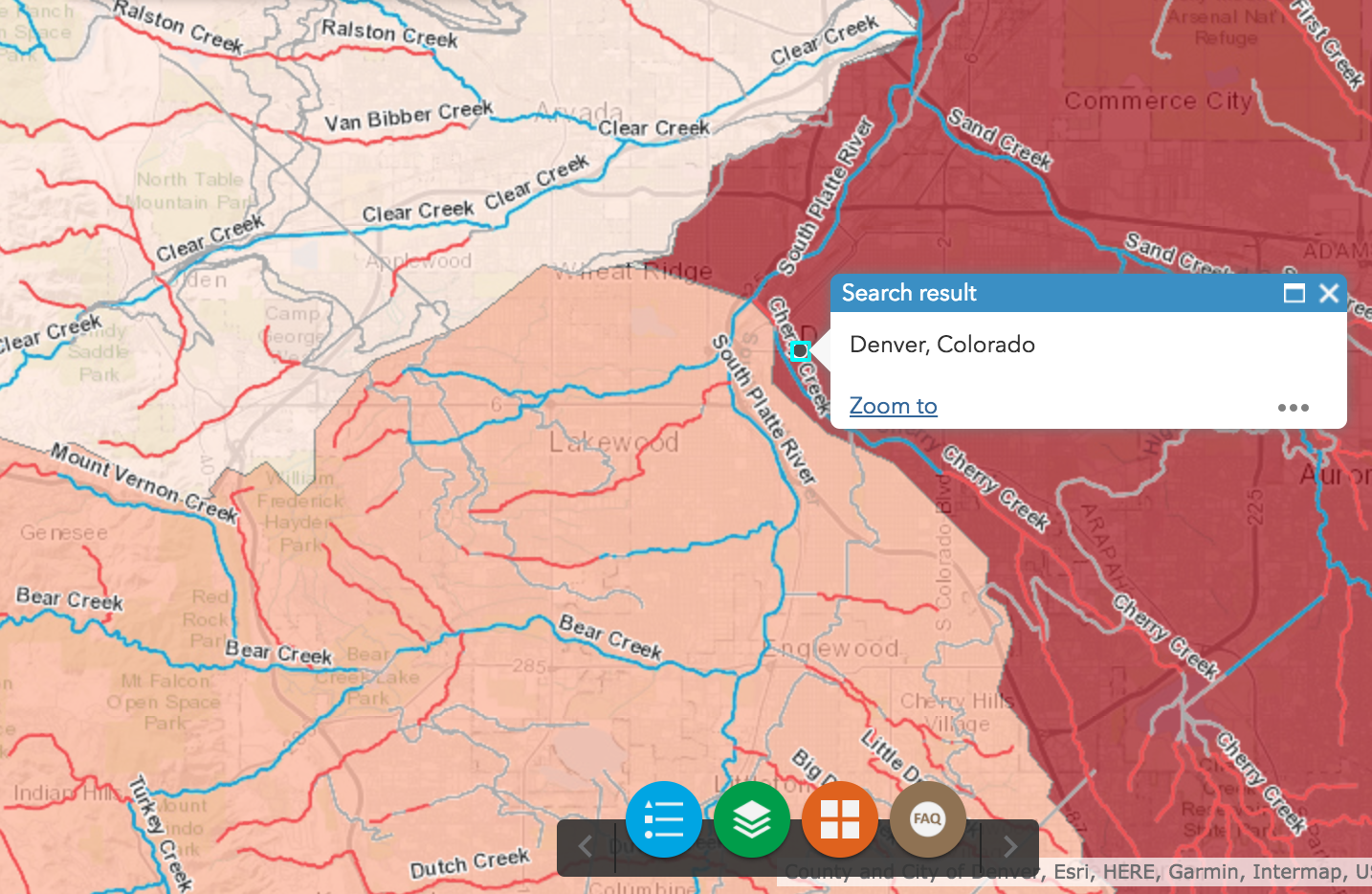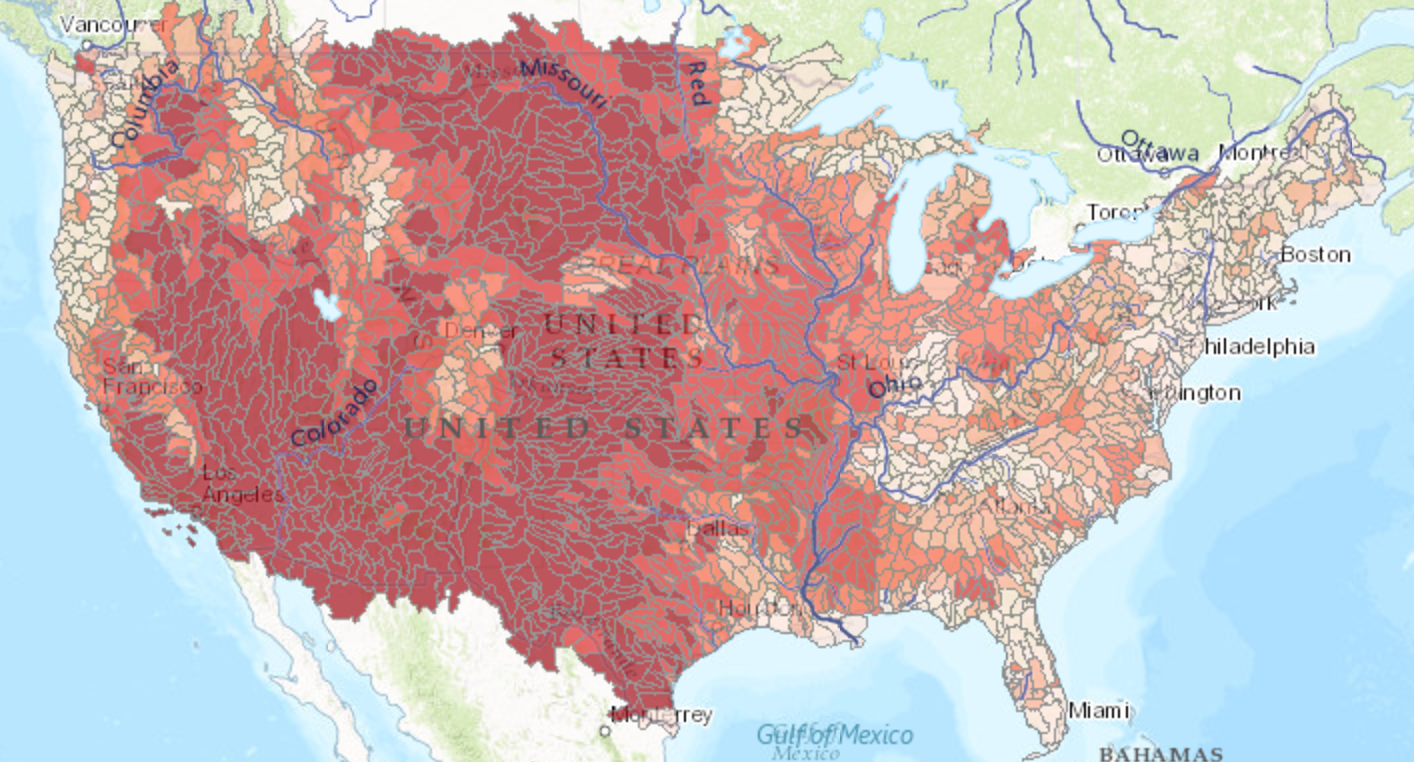By Randy Scholfield
Take a look at this map—the red lines show so-called “intermittent and ephemeral
” streams, the small seasonal streams that typically don’t flow year round.
All of this red is what’s at stake in the EPA’s current review of the Clean Water Rule.
Our landscape, especially in the West, is dominated by these seasonal streams that are an integral part of the larger watersheds. This is the water that flows in our rivers, irrigates our fields and comes through our taps. Clean water is just as vital to the rancher watering his hayfield as it is to the mom filling her glass at the tap. We all need clean water. We cannot pretend there is no connection.
Water flows downhill. We all live downstream. So what happens when these streams are no longer protected from toxins and pollutants?
As they say, gravity is a downer.
 In Colorado, 55 percent of stream miles in native trout habitat are classified as intermittent or ephemeral. In Montana, 48 percent. In Pennsylvania 30 percent and Wisconsin 47 percent. These streams – all intermittent and ephemeral streams across the country – could lose federal protection under the Clean Water Rule repeal now under consideration.
In Colorado, 55 percent of stream miles in native trout habitat are classified as intermittent or ephemeral. In Montana, 48 percent. In Pennsylvania 30 percent and Wisconsin 47 percent. These streams – all intermittent and ephemeral streams across the country – could lose federal protection under the Clean Water Rule repeal now under consideration.
Anglers, this hits us where we live.
While these seasonal stretches would still have protection in some states under state water quality laws, that protection varies by location.
Some will see this map and see all the red as a hair-on-fire sign of government overreach – you know, the “don’t let them regulate every ditch and puddle” argument.
But the 2015 Clean Water Rule actually clarified conflicting court decisions that were creating problems on the ground. It reinstated protections that were part of the original Clean Water Act for the first 30 years of its existence and created more certainty for both industry and regulators. This came after great efforts were taken to craft a rule that was scientifically grounded and thoroughly vetted by the public in a fair and open process. Scientists who’ve exhaustively studied the nation’s watersheds testified in support of the guidelines protecting seasonal streams. More than 1 million people submitted their own comments in support of protecting those streams.
But it also went to great pains to keep and clarify existing exemptions for farmers and ranchers. That’s right—there are NO additional requirements that would apply to agriculture and there are no waters protected under the CWR that were not historically already covered by the Clean Water Act.
For instance, the CWR does NOT apply to:
- artificial lakes or ponds used for stock watering or irrigation;
- normal agricultural activity including moving livestock, planting and harvesting;
- most ditches; only ditches that were constructed in streambeds and function as streams are covered;
- puddles. No puddles—period.
Take another look at the map. All of those red lines represent real places that carry water at least part of the year to the larger watershed and to the small tributaries and streams where we fish. These places are now at risk because of EPA’s ill-conceived, unscientific proposal.
With EPA’s rush to repeal the 2015, CWR, and we now have only a 30-day public comment period to let EPA hear our voices.
Does clean water matter to you—do you want the streams and rivers where you fish and camp and kayak and raft and play with your kids to be clean and healthy? Do you want your drinking water safeguarded from reckless development and wanton dumping?
Do you believe in gravity?
Then you support the 2015 Clean Water Rule. Raise your voice and let the EPA and Scott Pruitt know.
For more information on the 2015 Clean Water Rule, and to submit comments on the EPA’s proposed repeal of the 2015 Clean Water Rule, go to standup.tu.org.
Randy Scholfield is Trout Unlimited’s communications director for the Southwest.



